Table of Contents
Embarking on a culinary journey through Lebanon reveals a captivating tapestry of flavors and cultural heritage. The food from Lebanon, influenced by Mediterranean, Arab, Middle Eastern, and European traditions, offers a delightful fusion of tastes. From beloved traditional dishes to tantalizing street cuisine, Lebanese food is a treasure trove of mouthwatering delights that showcase the richness of its food culture. Let’s dive into this diverse and vibrant world of the food culture of Lebanon.
Top Ingredients of the Food from Lebanon
In Lebanese cuisine, a rich tapestry of flavors is crafted through the expert combination of various ingredients. Here is a list of the most commonly used ingredients that constitute the essence of Lebanese culinary traditions:
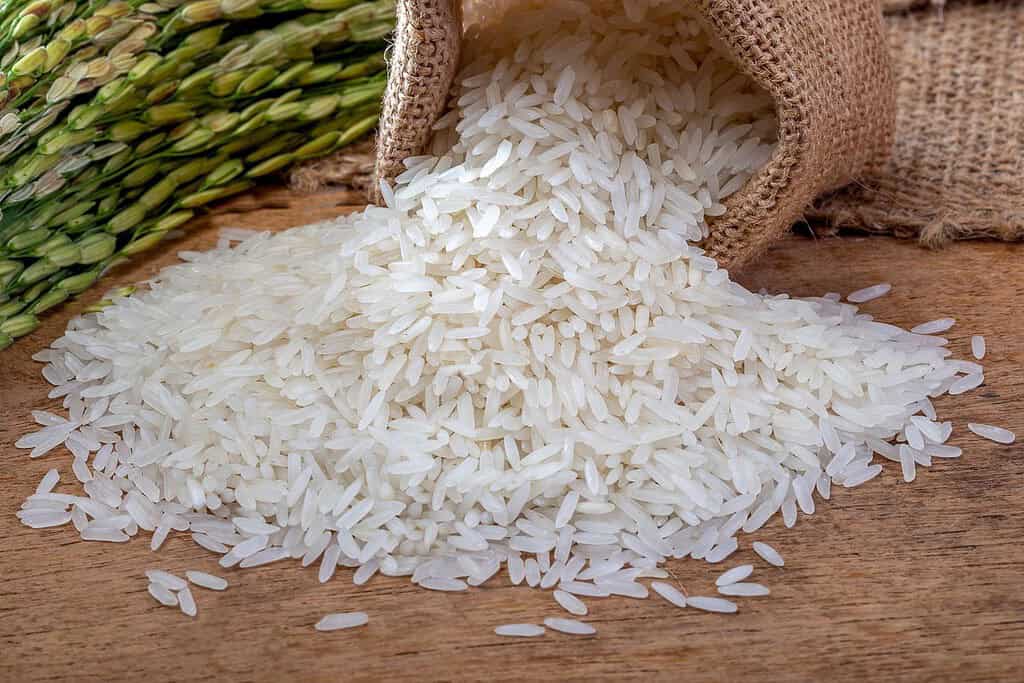
Rice: A fundamental component of Lebanese cuisine, rice is often served alongside various dishes and can be prepared in different styles, such as plain steamed rice or fragrant rice pilaf.
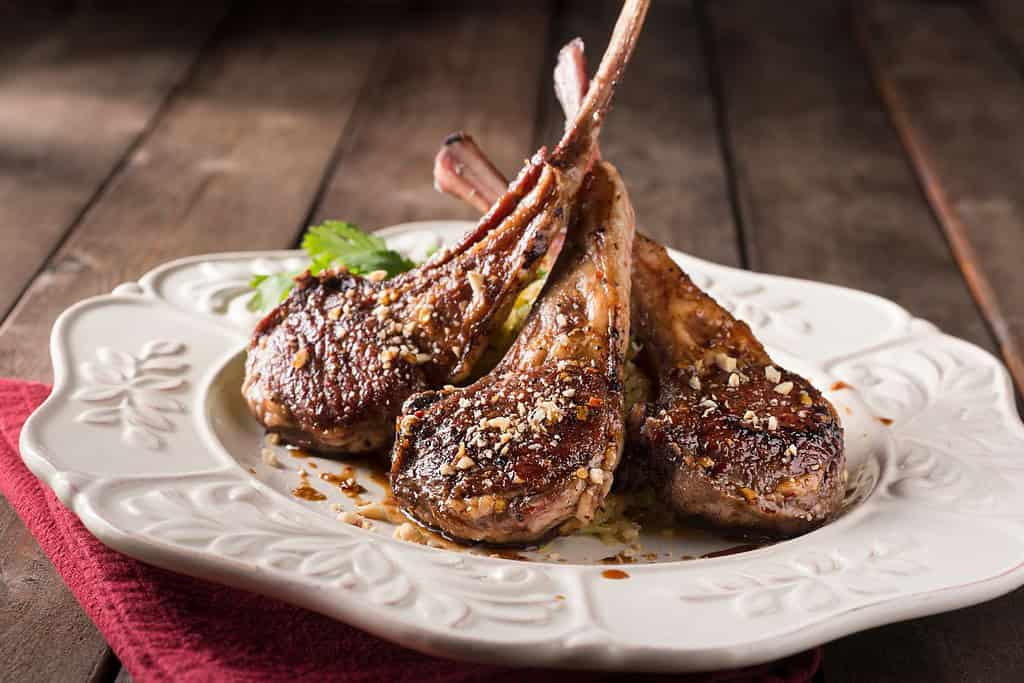
Lamb: Lamb holds a special place in Lebanese cuisine and is a primary ingredient in traditional dishes like Shish Kebabs, Kibbeh, and Shawarma.
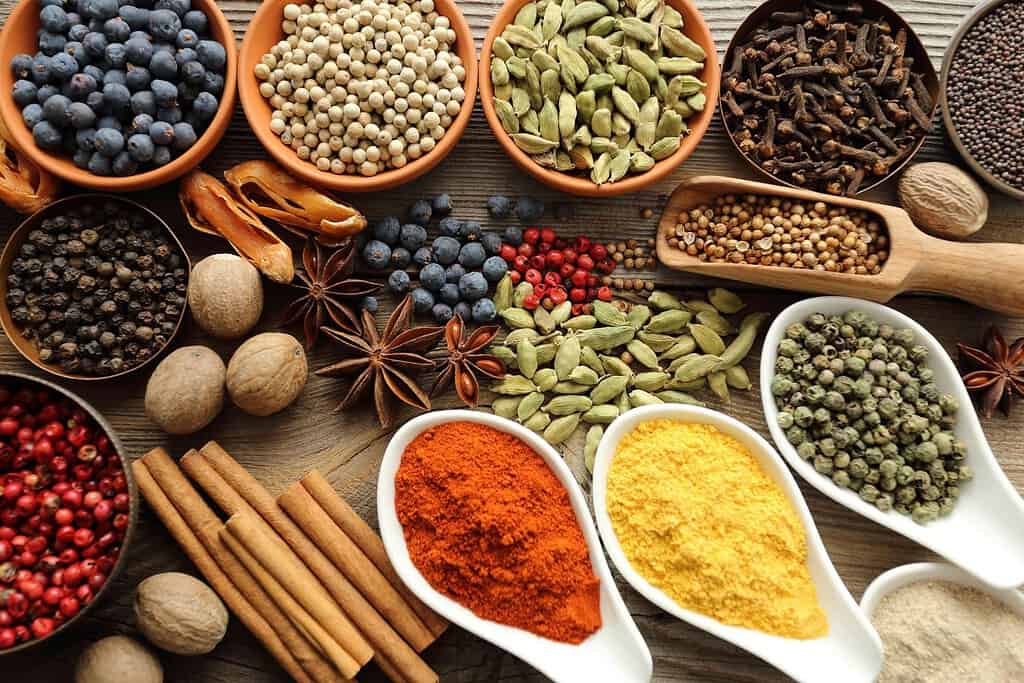
Spices: Lebanese culinary delights incorporate a medley of aromatic spices, including cumin, coriander, cinnamon, allspice, and sumac, which impart depth and character to their dishes.
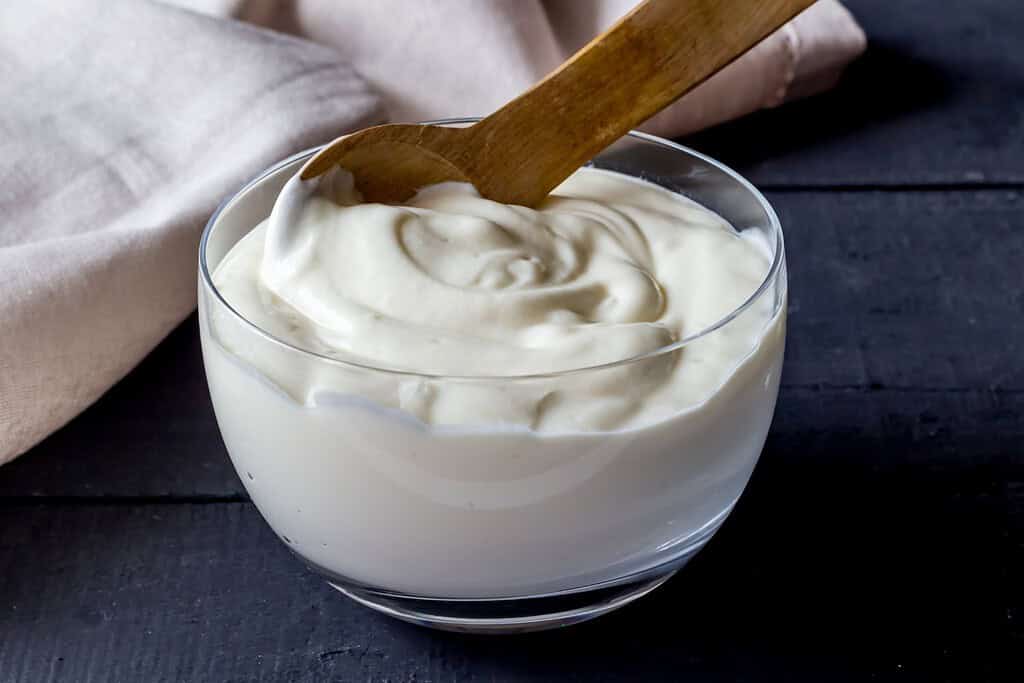
Yogurt: Yogurt is a cornerstone of Lebanese cuisine, used as a condiment, dip (Labneh), or as a marinade for meat, such as in Shish Taouk.
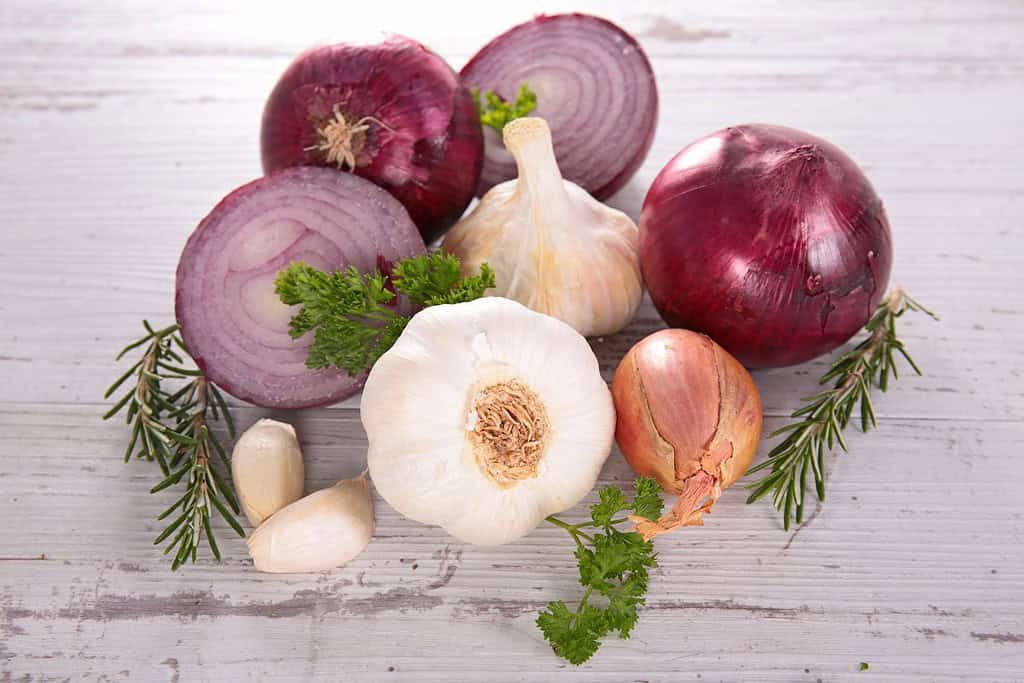
Onions and Garlic: These two ingredients form the core of many Lebanese dishes, providing a savory foundation for building flavor.
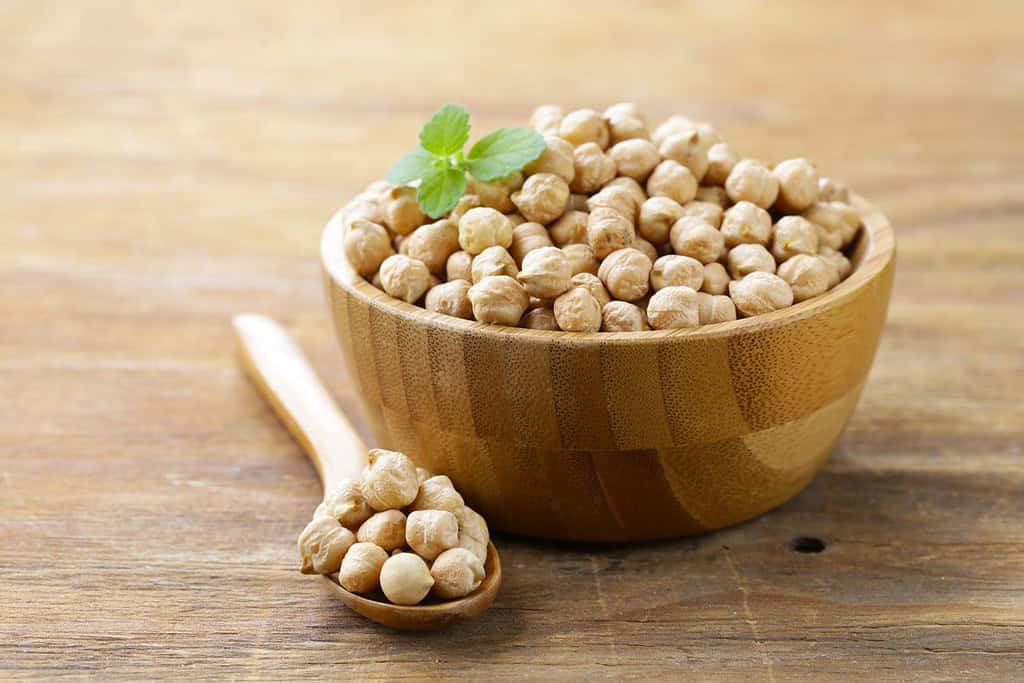
Chickpeas: Chickpeas are a versatile ingredient in Lebanese cuisine, employed in dishes like hummus, falafel, and hearty stews, offering a creamy and nutty dimension.
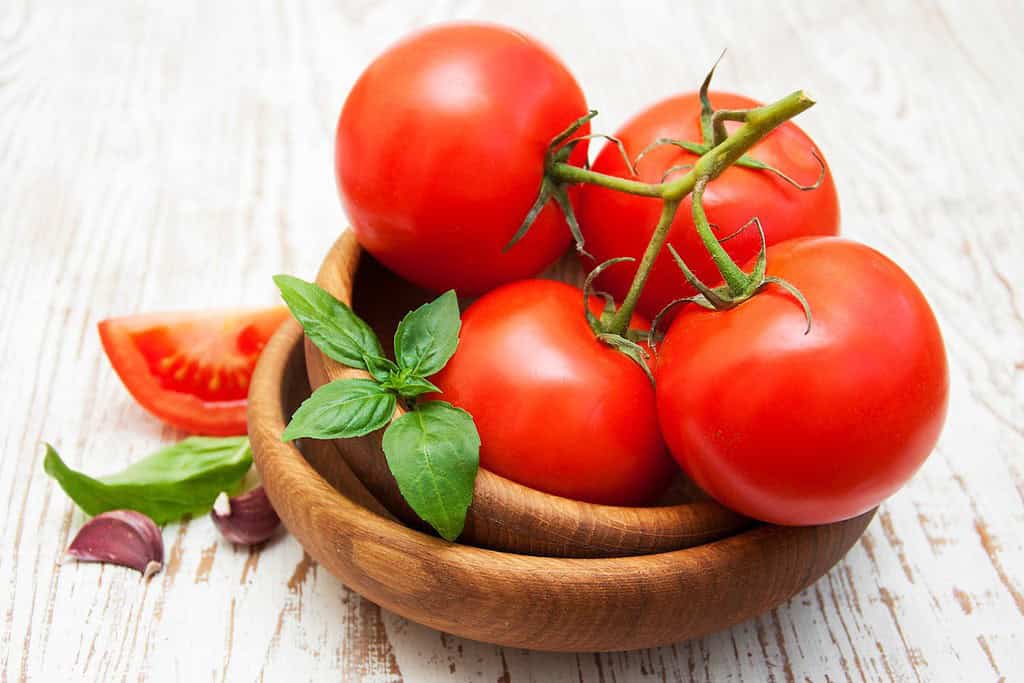
Tomatoes: Tomatoes are frequently used to lend their tangy and robust flavor to Lebanese stews, rice dishes, and salads like Tabbouleh.
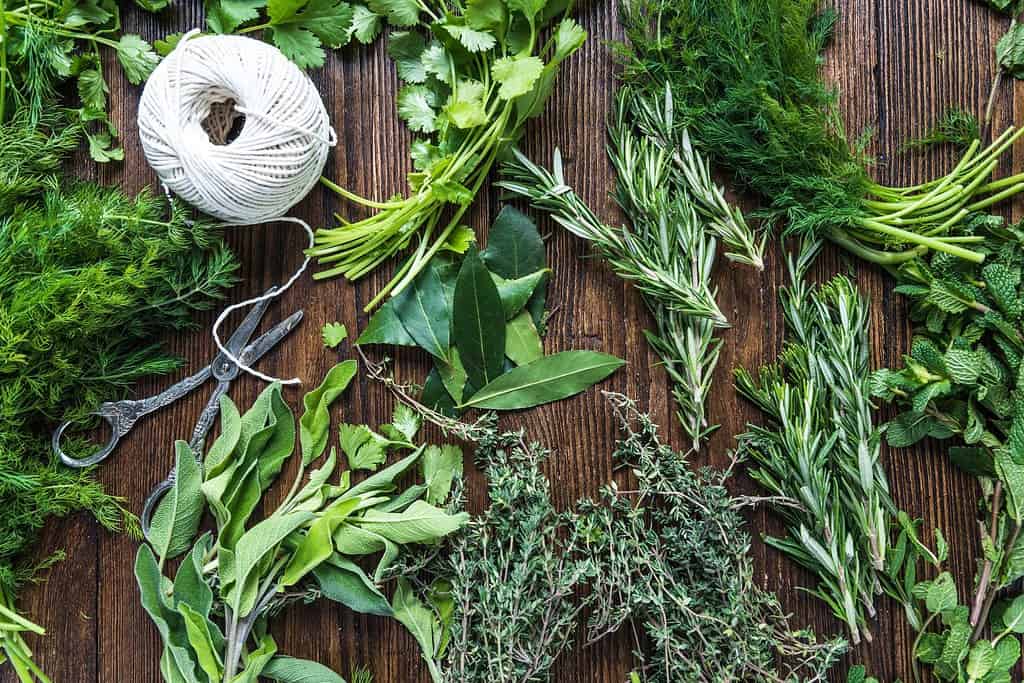
Fresh Herbs: Fresh herbs like parsley, mint, and cilantro are prevalent in Lebanese cuisine, adding freshness and aromatic complexity to salads, dips, and meat dishes.
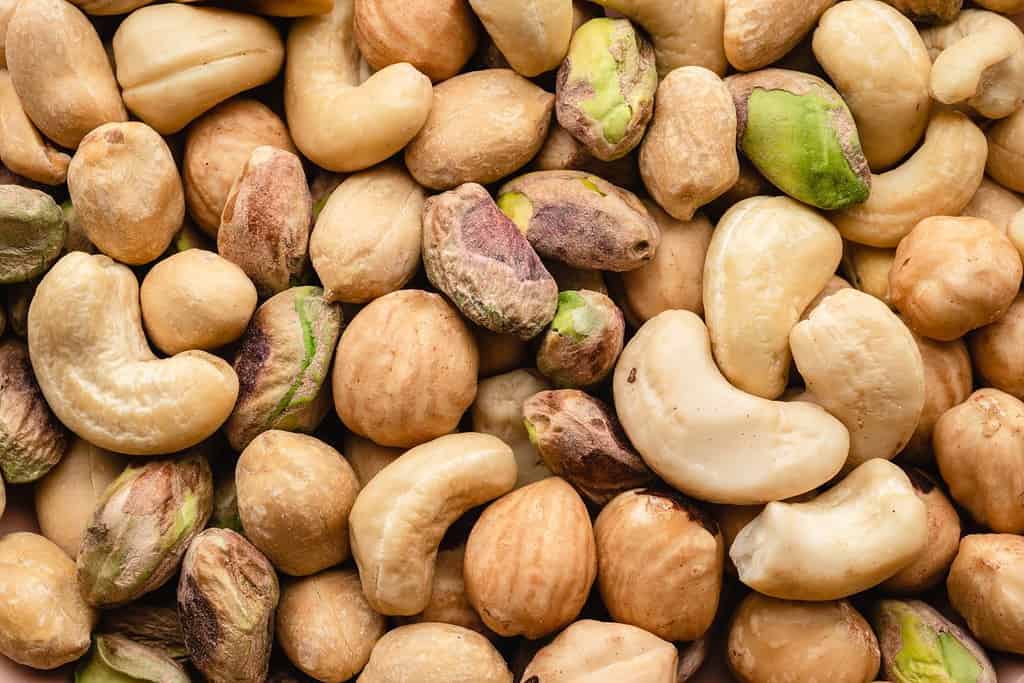
Nuts: Almonds, pine nuts, and walnuts are commonly utilized in Lebanese cooking, contributing crunch and richness to various dishes, including rice pilaf and pastries.
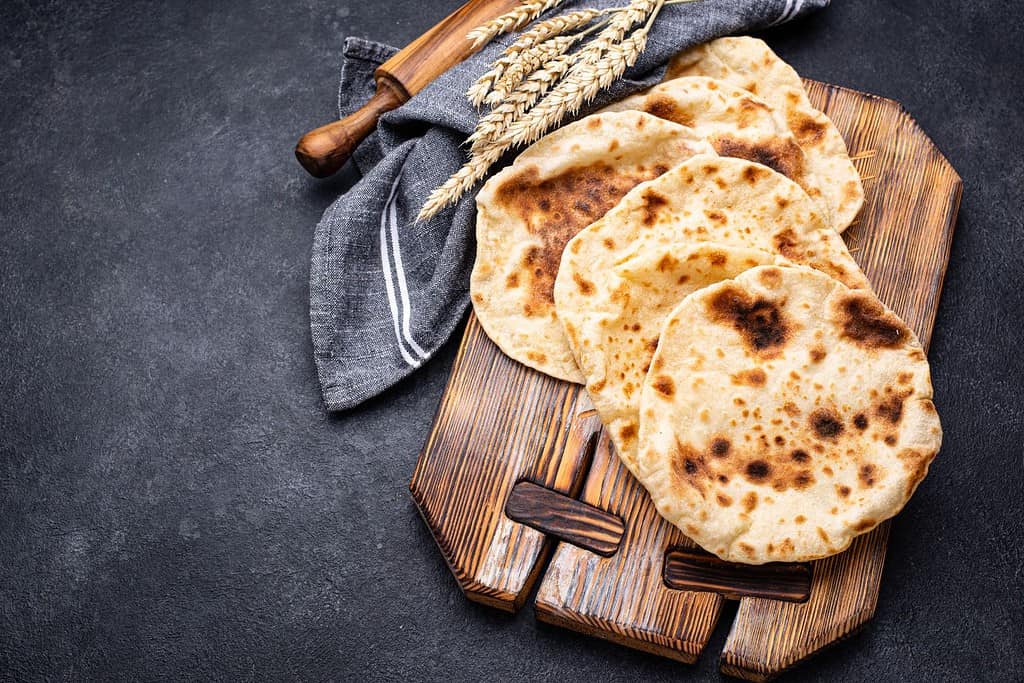
Lebanese Flatbread (Pita): Bread holds a significant role in Lebanese meals, and Pita is the most ubiquitous type, serving as a vessel for scooping up dips like hummus and baba ghanoush, or wrapping around grilled meats and vegetables.
These ingredients, in conjunction with a diverse array of regional herbs, spices, and produce, together create the captivating and diverse flavors that define the culinary tapestry of Lebanon.
The variety of food from Lebanese cuisine
Lebanese cuisine offers a captivating array of flavors and dishes that reflect the nation’s rich history and cultural diversity. Influenced by Mediterranean, Arabic, and Levantine culinary traditions, Lebanese food features a unique blend of ingredients and techniques. One of the most renowned dishes is Mansaf, a fragrant combination of tender lamb, aromatic spices, and yogurt-based sauce, served over a bed of fluffy rice. This dish symbolizes Lebanese hospitality and is often enjoyed at special gatherings. Another beloved Lebanese specialty is Kibbeh, flavorful ground meat and bulgur wheat patties, typically shaped into various forms and fried to perfection.
The heartiness of Lebanese cuisine shines through its grilled meats, with dishes like Shish Taouk (marinated chicken skewers) and Kafta (seasoned ground meat skewers) being favorites among locals. The country’s love for stews is evident in dishes like Fasoulia, a savory mix of green beans, tomatoes, and spices, often paired with rice. For a vegetarian option, Mjadra stands out, featuring lentils and rice cooked with onions and spices, served with a side of refreshing yogurt. Another popular choice is Sfiha, savory pastries topped with a mixture of ground meat, tomatoes, and spices.
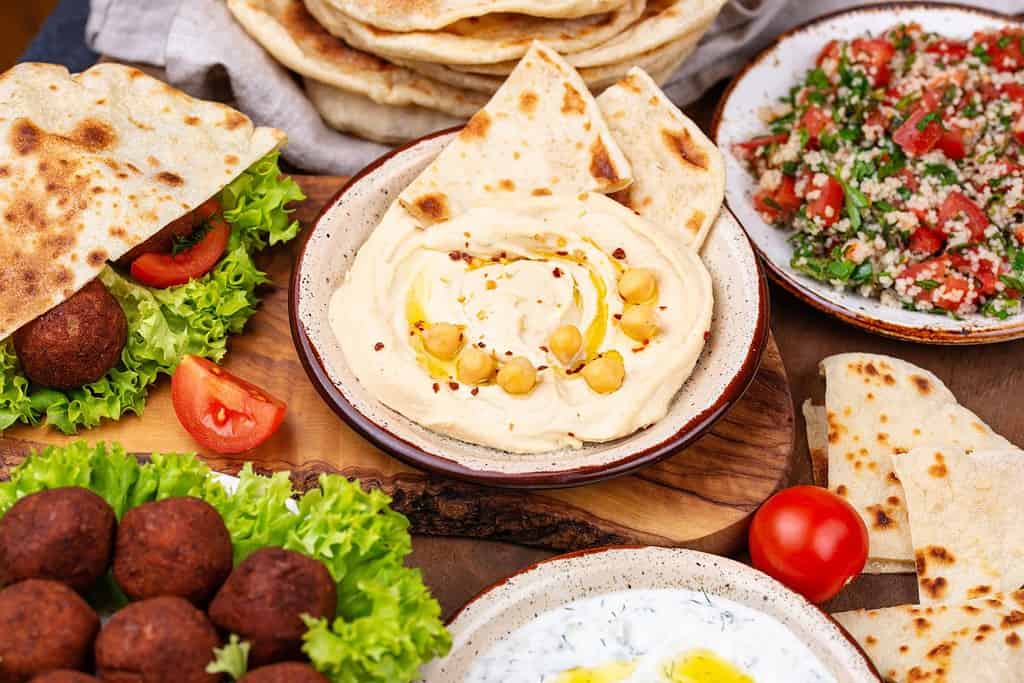
To satisfy your sweet cravings, Lebanese cuisine offers delightful desserts such as Baklava, layers of flaky pastry filled with nuts and sweet syrup, a treat enjoyed on special occasions. The diversity of Lebanese food extends to its regional specialties, with each area showcasing distinct recipes and culinary techniques. Whether savoring the succulent flavors of Shish Taouk or relishing the comforting taste of Mjadra, exploring the variety of Lebanese cuisine is an adventure in cultural richness and gastronomic pleasure.
While visiting beautiful Lebanon, you can indulge in the best Lebanese recipes. We offer a wide range of tours in Lebanon that allow you to experience the country’s culinary delights and cultural heritage.
Best Foods in Lebanon
Lebanese cuisine offers a delightful array of dishes that tantalize the taste buds with their rich flavors and cultural significance. While it’s challenging to single out a definitive list of the “best” foods, some dishes stand out as particularly beloved and iconic in Lebanese cuisine.
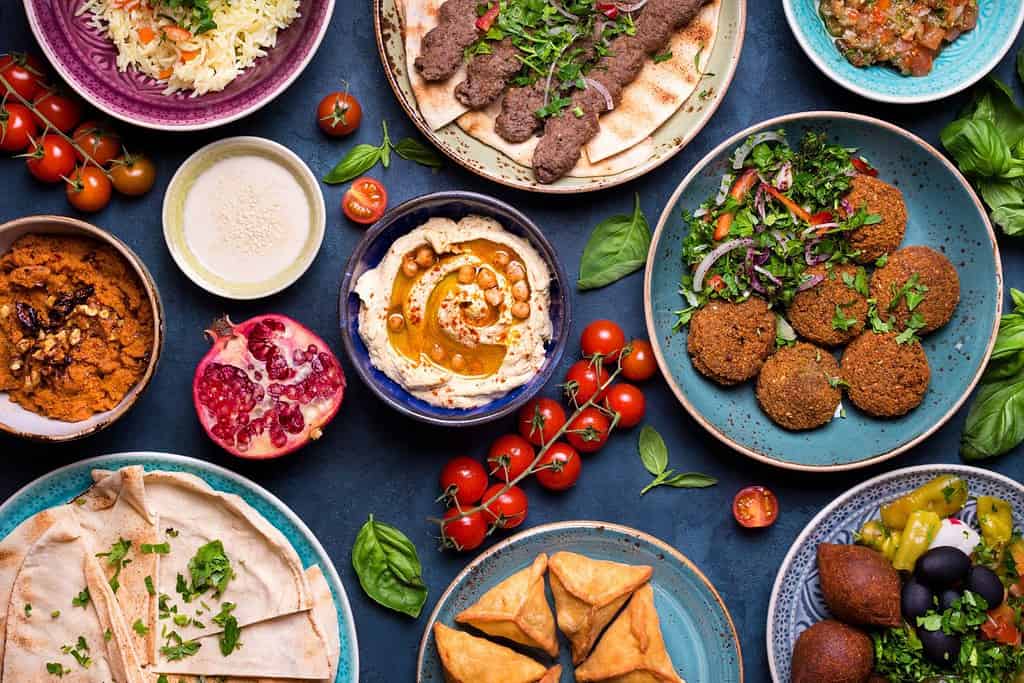
Lebanese cuisine is known for its creative use of spices, such as cumin, coriander, cardamom, turmeric, cloves, cinnamon, ginger, garlic, chilies, saffron, black pepper, and dried mint for its rich and flavorful dishes. The result is a harmonious blend of aromatic spices and vibrant herbs that make Lebanese food truly exceptional.
Most famous Lebanese foods
Here are the top most famous foods in Lebanon that have garnered recognition both locally and internationally:
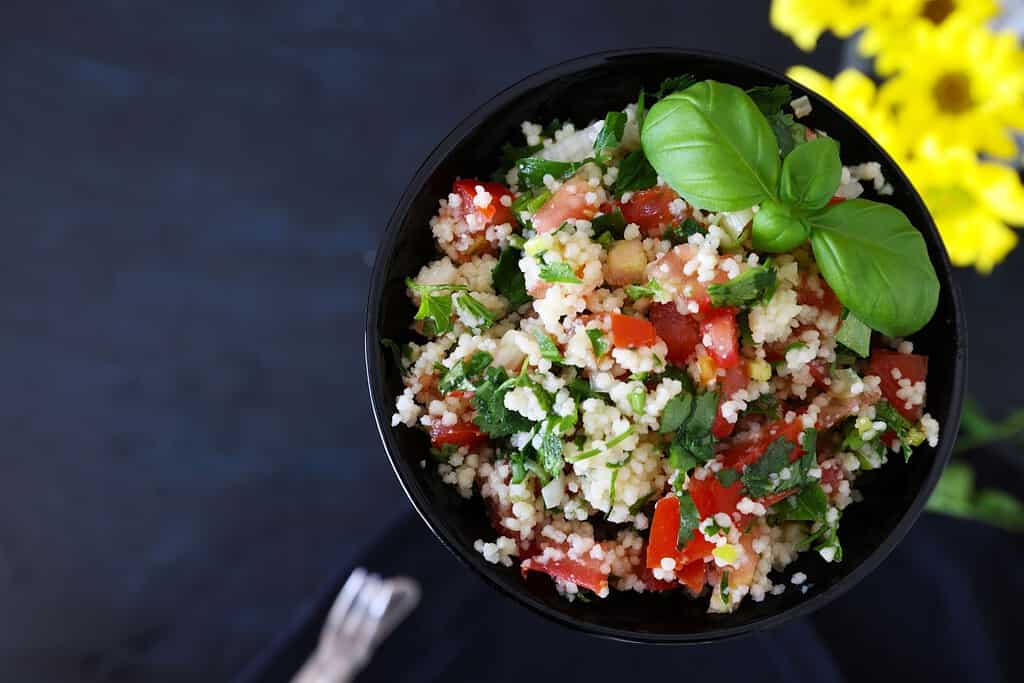
Tabbouleh: Widely considered a national dish of Lebanon, Tabbouleh is a refreshing salad made with finely chopped parsley, diced tomatoes, fresh mint, onions, and soaked bulgur wheat. It’s seasoned with a zesty dressing made from olive oil and lemon juice, creating a vibrant and tangy flavor.
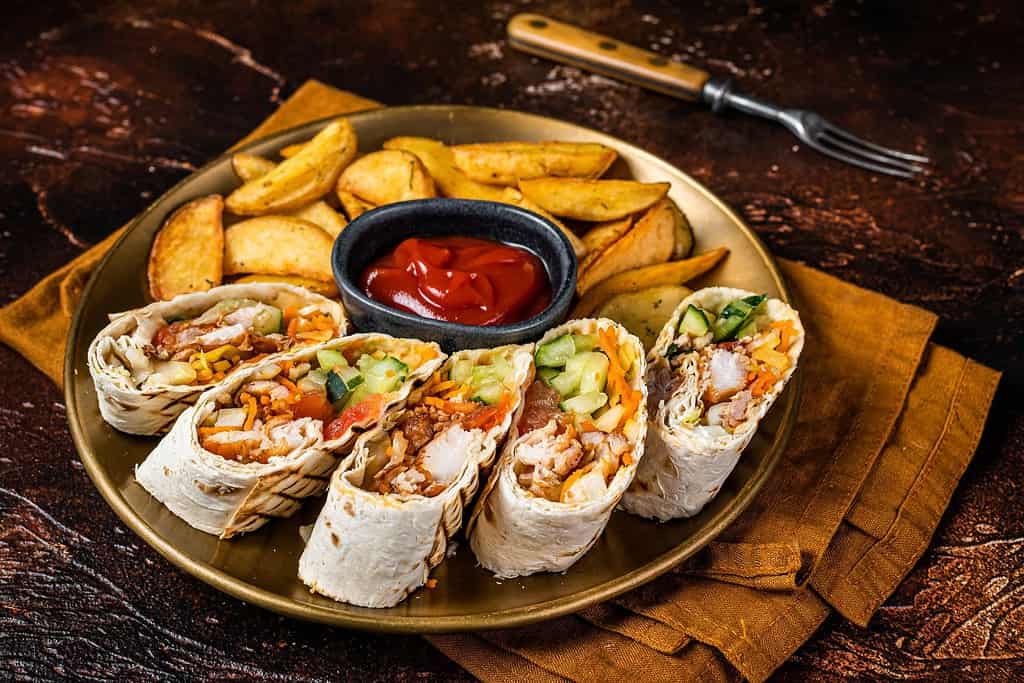
Shawarma: A symbol of Lebanese street food, Shawarma features thinly sliced, marinated meat (usually lamb, chicken, or beef) cooked on a vertical rotisserie. The tender, flavorful meat is typically wrapped in flatbread with a variety of toppings and sauces, making it a popular and convenient meal.
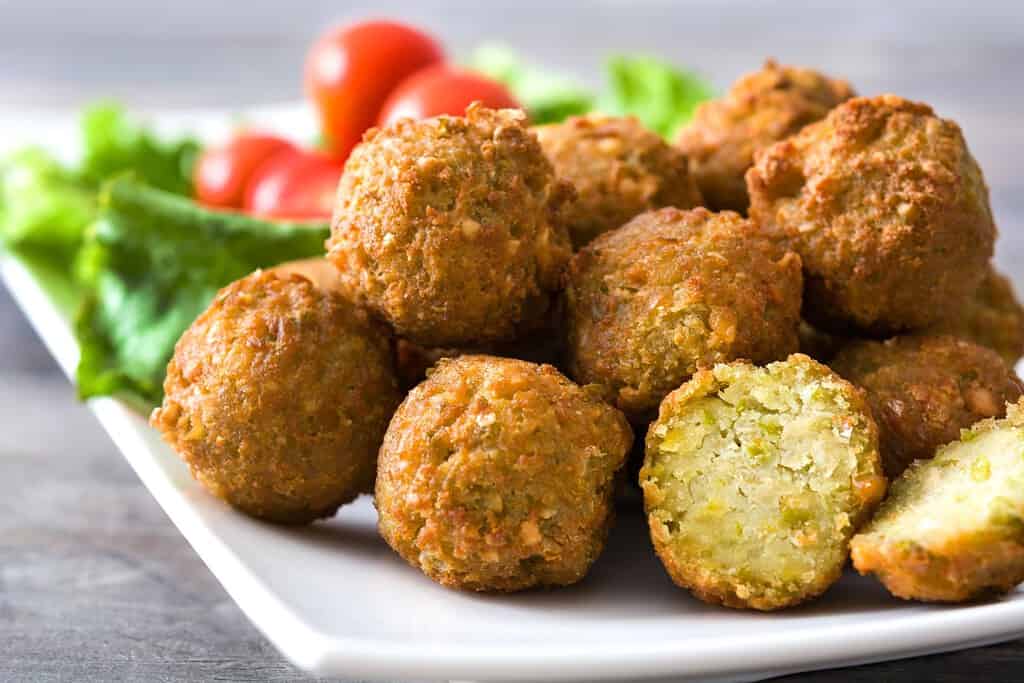
Falafel: These deep-fried chickpea or fava bean patties are a beloved Lebanese snack or sandwich filling. Crispy on the outside and tender on the inside, falafel is often served with tahini sauce, pickles, and vegetables in pita bread.
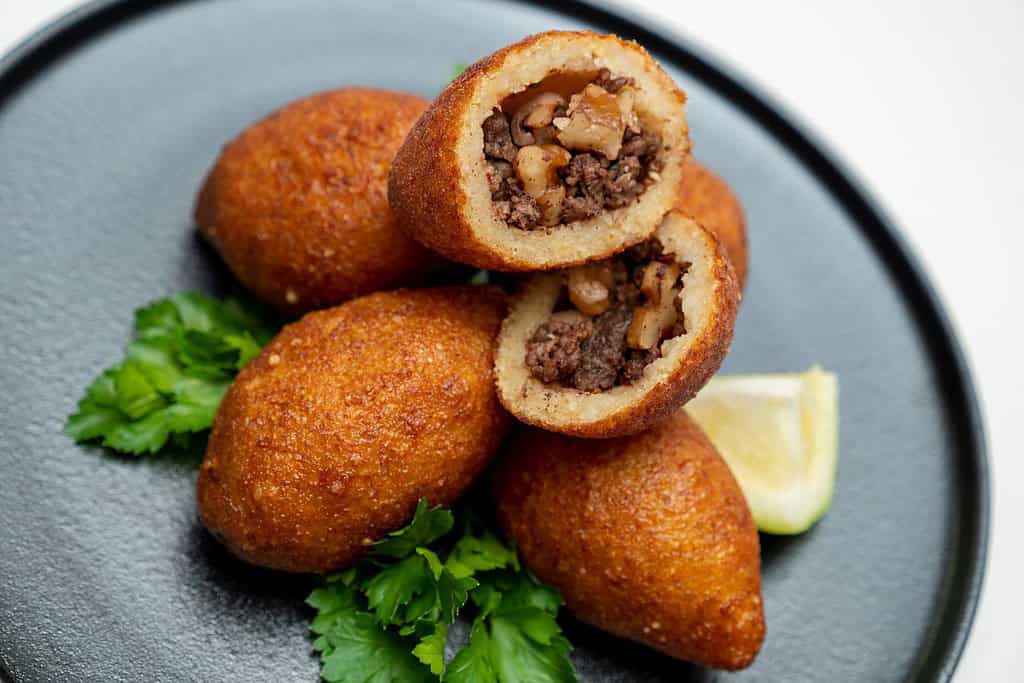
Kibbeh: A staple in Lebanese cuisine, Kibbeh is a dish made from ground meat (often lamb), bulgur wheat, and aromatic spices. It can be shaped into patties or formed into a layered casserole and baked or fried to perfection.
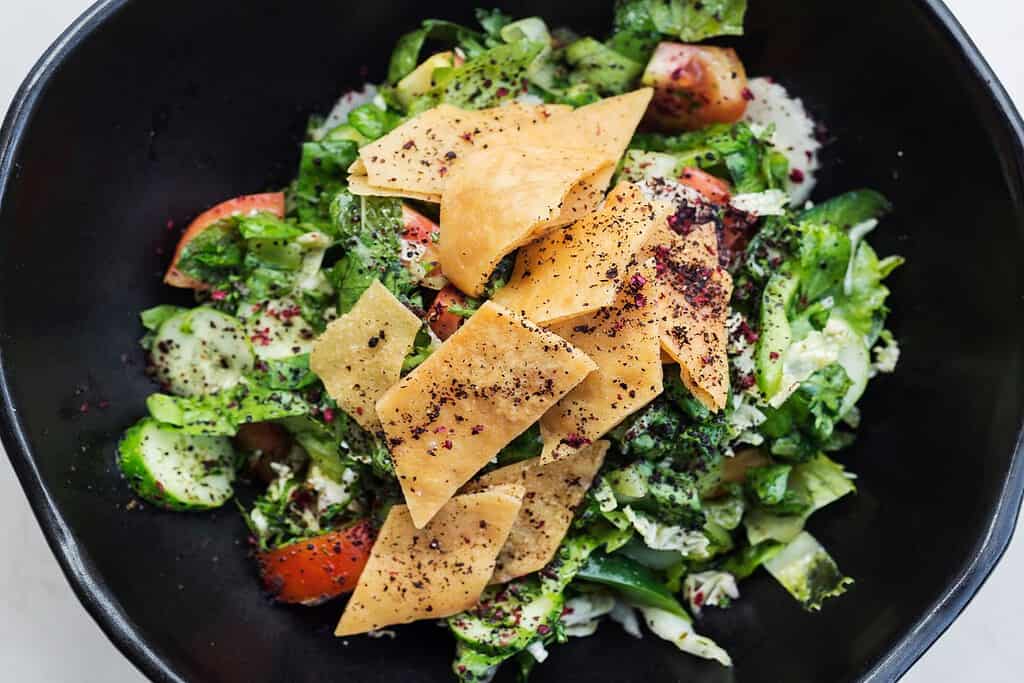
Fattoush: Fattoush is a delightful Lebanese salad composed of crispy pita bread pieces, fresh vegetables, and herbs. It’s typically dressed with a sumac-infused vinaigrette, giving it a unique and tangy flavor.
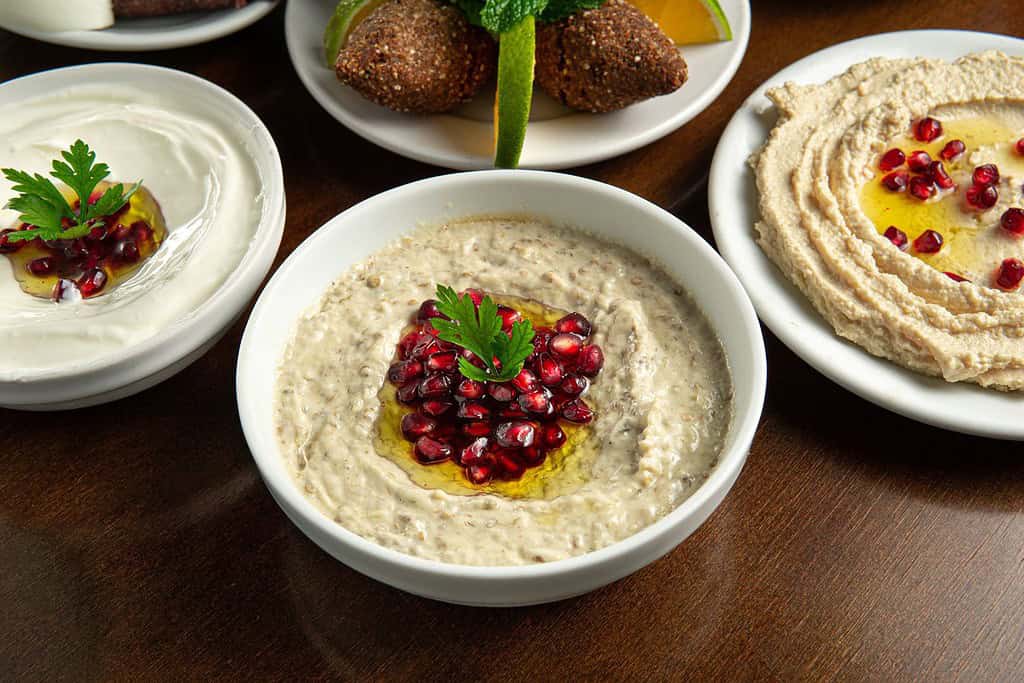
Moutabbal (Baba Ghanoush): Moutabbal is a creamy dip made from roasted eggplants, tahini, garlic, lemon juice, and olive oil. It’s often served as an appetizer with pita bread and is known for its smoky and savory taste.
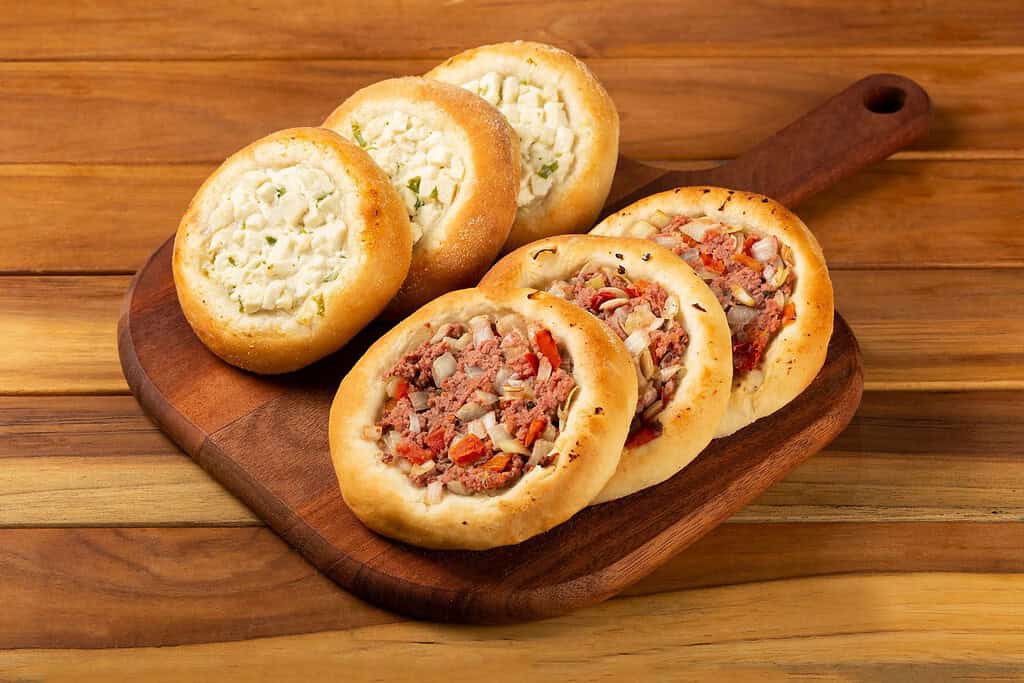
Sfiha: These small, savory pastries are a Lebanese favorite, often filled with a mixture of ground meat, onions, tomatoes, and aromatic spices. Sfiha comes in various shapes and sizes and is perfect for a quick snack.
These renowned Lebanese dishes showcase the richness and diversity of the country’s culinary heritage, making them popular not only within Lebanon but also among food enthusiasts around the world.
Lebanese Desserts
Lebanese desserts offer a delightful conclusion to a satisfying meal, showcasing a blend of sweet flavors and delicate textures. These desserts are deeply rooted in Lebanese culture and are often enjoyed during celebrations, festivals, and special occasions. Some popular Lebanese desserts include:
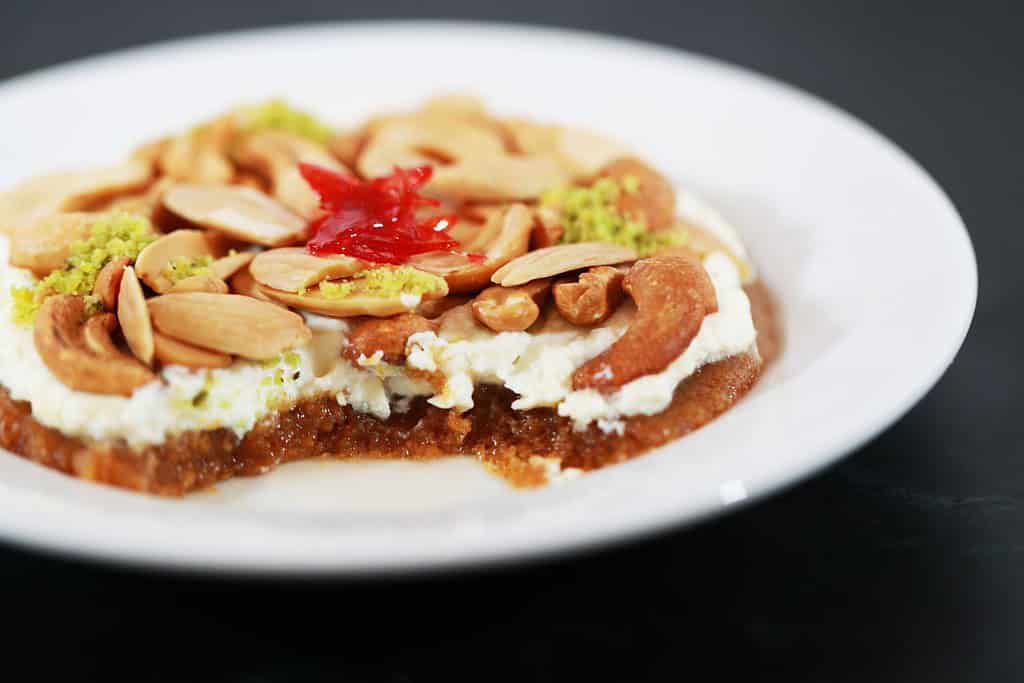
Mafroukeh: This is one of Lebanon’s most cherished desserts, especially during Eid celebrations. Mafroukeh is a creamy semolina pudding made with milk, sugar, and a medley of nuts like almonds, pistachios, and dates. The combination of luscious milk and the richness of dried fruits makes it an indulgent treat.

Atayef: A beloved street food, Atayef consists of small stuffed pancakes that are folded into half-moon shapes and filled with sweet cream or nuts. They are typically enjoyed during Ramadan and other festive occasions.
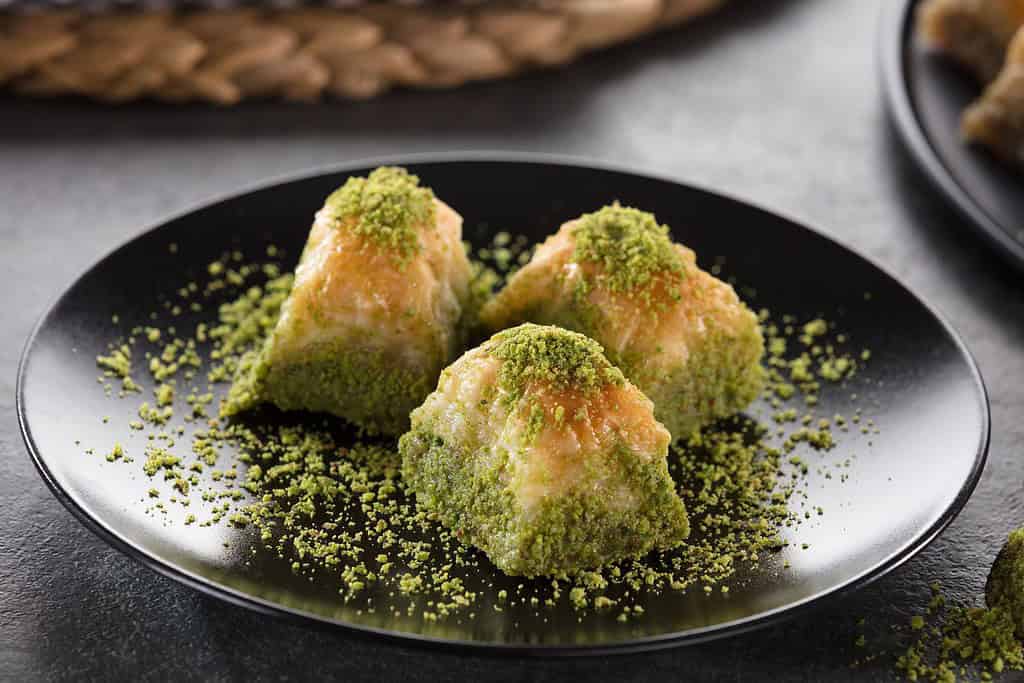
Baklava: Although Baklava is a dessert with origins in the Middle East, it has become a favorite in Lebanese cuisine as well. Layers of phyllo pastry are filled with chopped nuts and sweetened with honey or sugar syrup, creating a delectable and flaky treat.
The culture behind Lebanese food
Lebanese cuisine is deeply rooted in tradition, hospitality, and community. It reflects Lebanon’s rich history and diverse cultural influences, blending elements from Mediterranean, Middle Eastern, and Levantine culinary traditions. Food holds significant cultural importance in Lebanon and plays a central role in social gatherings, family events, and religious celebrations.
Hospitality is a cornerstone of Lebanese culture, and sharing food with guests is a deeply ingrained tradition. When visitors arrive at a Lebanese home, they are warmly welcomed with an array of delicious dishes, reflecting the host’s generosity and desire to make their guests feel at home. Meals are often communal affairs, with everyone seated around a shared table, emphasizing the importance of togetherness and solidarity in Lebanese culture.
Also, read:
Beirut, Tripoli, and Tyre

Take a culinary journey through Beirut, Tripoli, and Tyre, and immerse yourself in the captivating flavors that have been crafted and cherished for generations in Lebanon. Let the traditional foods of each city paint a flavorful picture of Lebanese culinary diversity, inviting you to savor the unique delights of these remarkable regions.
Within the enchanting world of Lebanese cuisine, each region brings its own distinct flavors and culinary traditions. Let’s embark on a journey to Beirut, Tripoli, and Tyre, and discover the delightful differences in their traditional foods.
The differences in dishes from each Lebanese city can be attributed to a combination of factors, including geography, historical influences, and the majority ethnic group residing in each region. Lebanon’s diverse landscape and geographical features, such as mountains, coastline, and fertile plains, have influenced the availability of certain ingredients and agricultural practices in different regions. This, in turn, has contributed to variations in the types of dishes that have evolved in each city.
Beirut’s Kibbeh Nayyeh features finely minced raw meat mixed with bulgur wheat, spices, and fresh herbs, offering a unique and savory experience. Tripoli’s Mousakhan is a sumptuous dish of roasted chicken, sumac, and flatbread, celebrating the flavors of the north. Tyre’s Sayadieh showcases a delightful combination of fish, rice, and caramelized onions, providing a taste of the coastal region.
For example, in Beirut, being the capital and a melting pot of cultures, the culinary scene is more diverse and influenced by a mix of traditions from various regions. Tripoli, with its proximity to the Mediterranean, has culinary influences from the sea and neighboring countries, leading to distinct dishes like Mousakhan. In Tyre, the coastal location and fishing traditions influence the cuisine, resulting in flavorful seafood dishes like Sayadieh.
Comparing the three cities, Beirut offers a diverse range of dishes influenced by its cosmopolitan nature, Tripoli highlights flavors from the Mediterranean, and Tyre tantalizes with fresh seafood creations. Each city showcases its own culinary identity, adding depth to the multifaceted and rich tapestry of Lebanese cuisine.
Beirut

Starting our culinary journey in Beirut, the capital city of Lebanon, we are greeted with a bustling food scene that reflects the country’s diverse cultural influences. The city offers a mix of traditional Lebanese dishes and international flavors. As we explore the bustling markets and street food stalls, the aroma of freshly baked flatbreads and kebabs fills the air. Beirut’s food culture is a melting pot of flavors, showcasing a wide array of dishes to please every palate.
Famous food from Beirut
- Mansaf: A fragrant rice dish cooked with lamb or chicken, served with yogurt sauce and garnished with almonds and pine nuts, epitomizing Lebanese hospitality.
- Sambousek: Delicate pastry triangles filled with spiced ground meat and onions, served with a tomato-based sauce and yogurt.
- Bamyeh: A savory stew made with lamb or chicken, okra, and tomatoes, often enjoyed with flatbread or rice.
- Man’oushe: Flatbreads topped with various fillings like za’atar, cheese, or vegetables, served with a side of yogurt.
- Kebbeh: Meat patties made with bulgur wheat, minced meat, and spices, often deep-fried to perfection.
- Makloubeh: A hearty rice and vegetable dish flavored with spices and served upside-down for a stunning presentation.
- Atayef: Sweet stuffed pancakes filled with cream, nuts, or cheese, often enjoyed during festive occasions.
Tyre

Continuing our journey to Tyre, a city renowned for its rich culinary traditions, we find ourselves immersed in the flavors of traditional Lebanese cuisine with a focus on fresh seafood dishes and aromatic rice preparations. Tyrian cuisine embraces bold flavors and a strong emphasis on locally sourced ingredients, making it a distinct gastronomic experience.
Famous food from Tyre
- Sayadieh: A flavorful rice dish with fried fish, caramelized onions, and a blend of spices, garnished with toasted nuts.
- Fattoush: A refreshing salad made with fresh vegetables, crispy pita bread, and a tangy sumac dressing.
- Shish Barak: Small meat dumplings cooked in a yogurt and garlic sauce, a comfort food favorite.
- Harira: A traditional Lebanese soup made with lentils, chickpeas, and lamb, garnished with fresh herbs and lemon.
- Awamat: Sweet and syrupy doughnut-like desserts, often drizzled with rosewater or honey.
- Moussaka: A rich eggplant and ground meat casserole, baked to perfection with tomatoes and bechamel sauce.
- Halawet el Jibn: A sweet cheese pastry roll filled with cream, semolina, and topped with rosewater syrup.
Tripoli
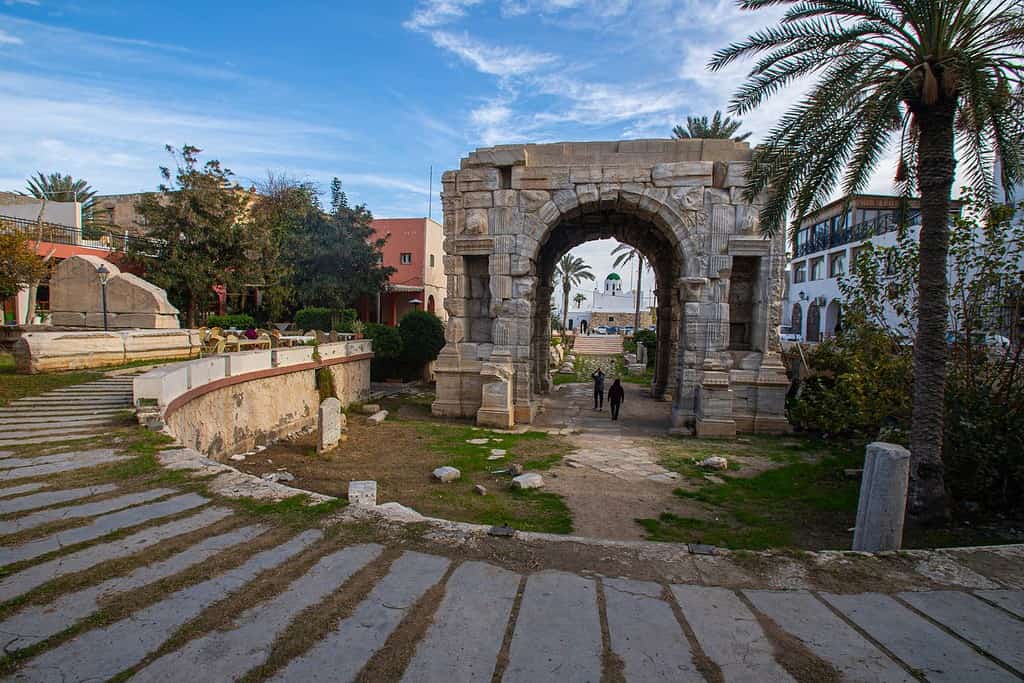
Our culinary journey concludes in Tripoli, a city steeped in history and renowned for its robust and flavorful dishes. Tripolitan cuisine is characterized by its bold use of spices, creating dishes that tantalize the taste buds with a burst of flavors.
Famous food from Tripoli
- Makloubeh al-Lubnan: A sumptuous rice dish prepared with lamb, eggplant, and a blend of aromatic spices, distinct from other variations.
- Markouk: A delicious Lebanese flatbread, often served as a staple with various dishes.
- Kebab Karaz: Spiced meat skewers served with a sour cherry sauce, a unique and mouthwatering combination.
- Shawarma: Marinated and grilled chicken or lamb slices, served in pita bread with tahini and vegetables.
- Moghrabieh: A delectable stew prepared with giant couscous, chickpeas, and tender pieces of meat, cooked in a flavorful broth.
- Batata Harra: Spicy and seasoned fried potatoes, a popular side dish with a kick.
- Mafroukeh: A festive dessert made with semolina, pistachios, and sugar syrup, perfect for celebrating special occasions.
Book Your Trip to Lebanon Today!
Embark on an unforgettable journey and explore the allure of Lebanon through our exclusive tours.
More About Lebanon
[the-post-grid id=”50388″ title=”Lebanon Main page”]
